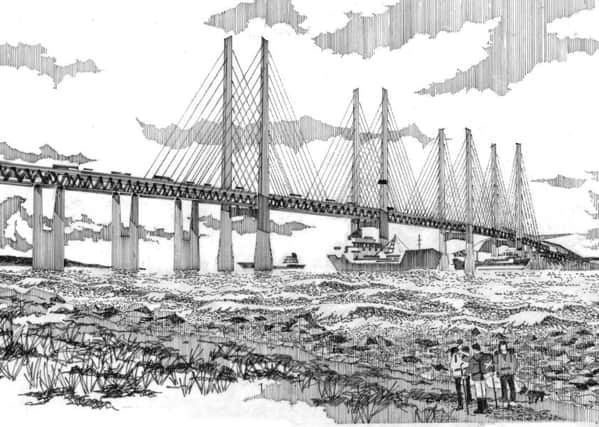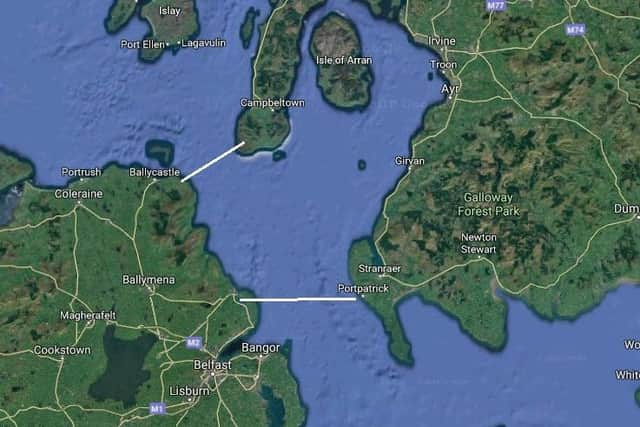Time we took NI-Scotland bridge seriously: top architect


Professor Alan Dunlop shared the first image of how the bridge might look as he gave the keynote address at a major architectural conference in Scotland.
His idea has already won political support on both sides of the Irish Sea, with DUP heavyweights such as Arlene Foster and Sammy Wilson giving the idea their backing here, and former Foreign Secretary Boris Johnson saying the project needs to be looked at “seriously”.
Advertisement
Hide AdAdvertisement
Hide AdProfessor Dunlop believes the time has come for a full feasibility study to examine the costs, benefits, and engineering challenges that such a large scale infrastructure project would entail.


He has suggested two options – either a connection between Larne and Portpatrick or a shorter crossing between Mull of Kintyre and Torr Head.
While he admits the project could cost upwards of £15 billion, the leading architect points to large scale “pioneering and remarkable” infrastructure projects undertaken elsewhere in Europe.
In particular, he highlights a bridge connecting Copenhagen in Denmark and Malmo in Sweden, and a 685-mile road Norway is in the process of developing.
Advertisement
Hide AdAdvertisement
Hide AdThe Norwegian project, Professor Dunlop said, will cross 20 fjords, some over 600 metres deep, using floating bridges and tunnel connections to link Trondheim in the north of the country to Kristiansand in the south.


His ‘Celtic Bridge’ idea would need to overcome similarly complex engineering problems.
A sea trench known as Beaufort’s Dyke, around 30 miles long, over two miles wide and between 200 and 300 metres deep, lies in the North Channel between Northern Ireland and Scotland.
Professor Dunlop is confident such challenges can be overcome.
“If they can do it in Norway, why can’t we do it?” he said.
Advertisement
Hide AdAdvertisement
Hide Ad“We have the engineering and architectural talent and the capability to build this project; it would be a transformative economic generator and a world first.”
Professor Dunlop, in his keynote speech to an audience of international academics, architects, and engineers at Robert Gordon University on Wednesday, said: “A bridge link will re-balance the over concentration of power in the south of England and could bring extraordinary benefit to many areas.
“It would be an investment in the true north.”
DUP MP Jim Shannon also told the News Letter that the bridge would have “incredible” benefits, but he stressed that his party’s priority was addressing problems in the health service, roads network and education system.
“Any connection between Northern Ireland and the UK mainland would be welcome,” Mr Shannon said.
Advertisement
Hide AdAdvertisement
Hide Ad“Whether it is feasible, well, I’m not an engineer. But there is one key issue and that is the cost.
“The cost is going to be astronomical but the benefits will be incredible.
“The possibilities are great but we do have other priorities that need to be addressed.
“I think the priority right now has to be on what’s needed immediately – and that’s health, education and Northern Ireland roads.”
Advertisement
Hide AdAdvertisement
Hide AdHe added: “While those are regional issues, this is a strategic infrastructure project for the whole of the United Kingdom. It would have to come from additional monies.
“The United Kingdom is big enough to look at both the issues involving health, education and day-to-day issues, and strategic infrastructure projects.
“It can do both, but the priority has to be on the first.”